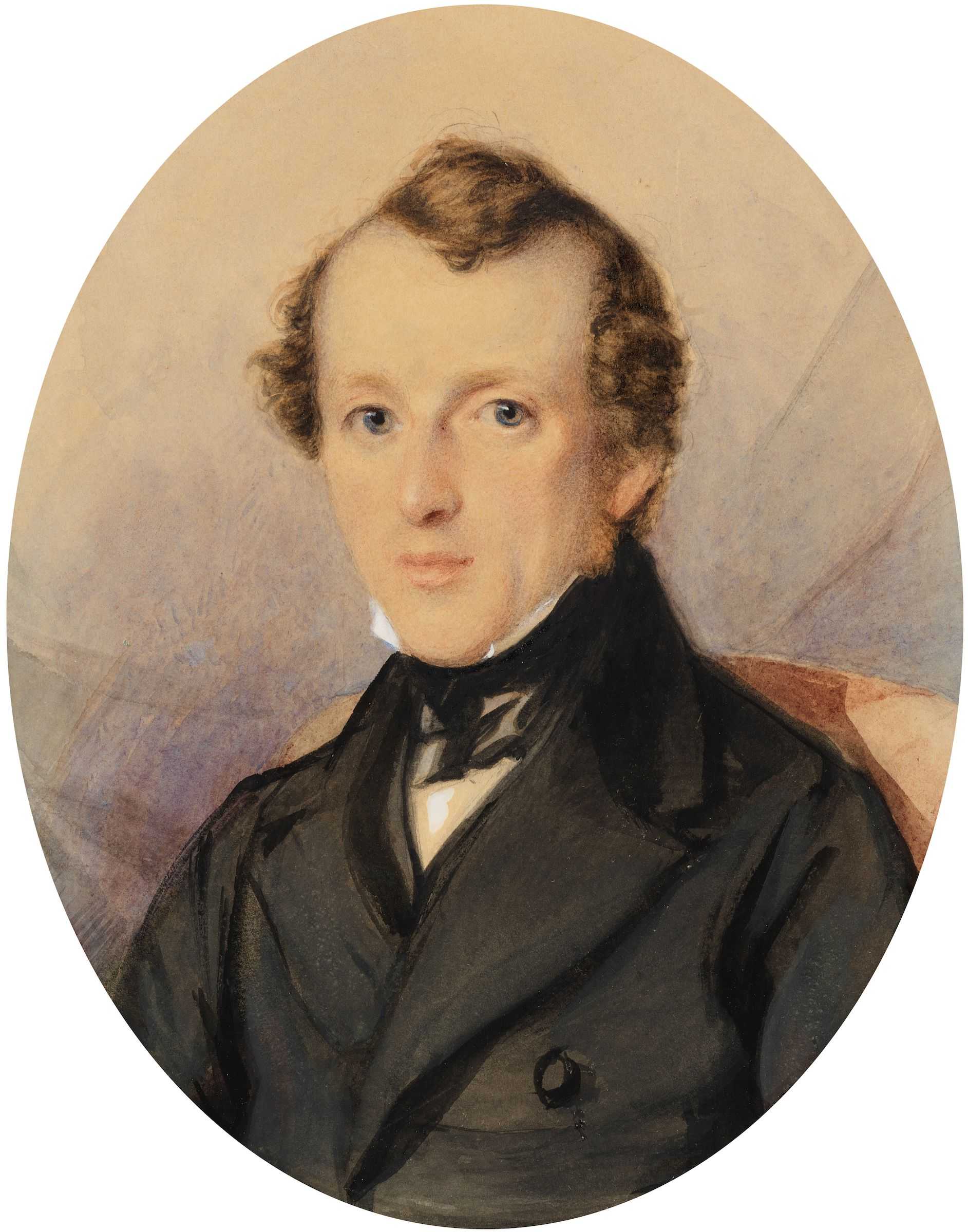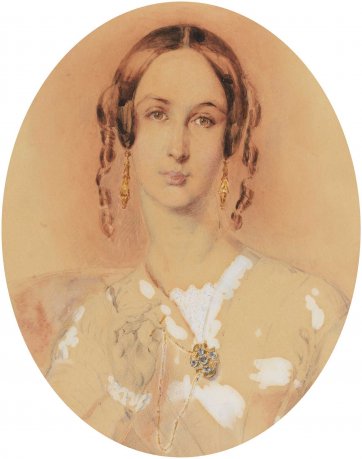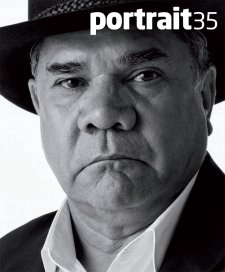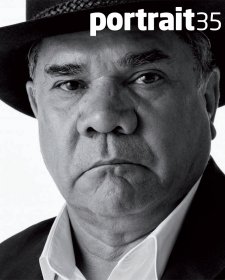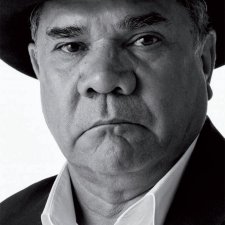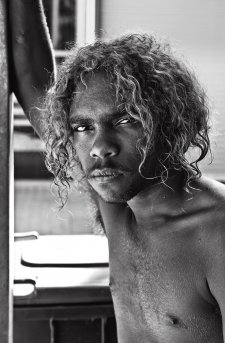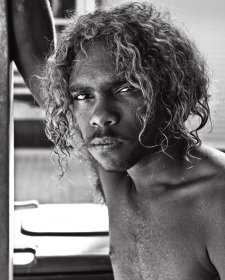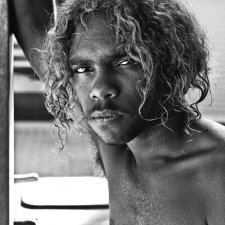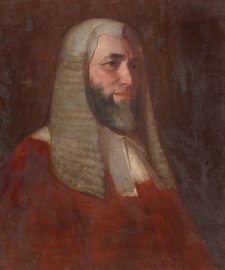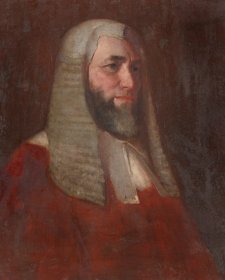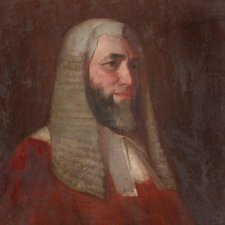A few years ago a Sydney radio station was offering a night in Pentridge Gaol with notorious criminal Chopper Read as a prize. Who would want to be in the same space as the infamous and frightening convict?
There was no shortage of applicants, just as in Hobart in the 1840s, there were plenty of eminently respectable families willing to invite a notorious criminal into their homes. Edward and Martha Butler of Hobart were amongst them when they commissioned dandy and dilettante, convicted forger, suspected poisoner and artist Thomas Griffiths Wainewright (1794–1847) to take their portraits.
Edward Paine Butler (1811-1849) was the eldest son of Gamaliel Butler and his wife Sarah (neé Paine). Gamaleil Butler (1783-1852) a barrister and solicitor in London heard about the burgeoning colony in Van Diemen’s Land from his brother in law, Edward Paine who had emigrated to Hobart in 1820, and invested £10,000 in a shipment of sugar to be sold in the colony. When Paine drowned, Gamaliel Butler was determined to supervise the sale of his investment and, taking his wife but leaving his six children in the care of relatives, set out for Hobart on the Prince Regent, arriving in July 1824. He quickly set up his own practice and in a few years acquired extensive land holdings and fathered six further children in Tasmania.
Following in his father’s footsteps, Edward Butler studied law in London and emigrated with his newly married wife, Martha Sarah Butler (neé Asprey, of the London firm of jewellers) to Tasmania in 1835. Their boat, The Enchantress came to grief at the entrance to the D’Entrecasteaux Channel and while all passengers were saved, much of the cargo and personal belonging were lost. Martha Sarah Butler was said to have lost much valuable jewellery. Edward Butler joined his father and his partner RW Nutt in the law firm which became known as Butler, Nutt and Butler. Two of his younger brothers later joined the family firm as well. Edward Paine Butler was known to have tuberculosis and he may have emigrated to the colony for health reasons. The consumptive pallor and thin face in his portrait may be symptomatic of his illness. He died in 1849 aged only thirty-seven.
Martha Sarah Butler returned to Europe with her four children after her husband’s death. She lived in England and in Paris where she was in contact with Lady Blessington, the Irish novelist, and her partner, the Comte d’Orsay, arbiter of fashion in the early years of Victoria’s reign. The connection was through Blessington’s brother, Robert Power, who was Surveyor General of Van Diemen’s Land from 1841 to 1857. One son, Francis Frederick Butler, returned to Tasmania where he was a pastoralist and orchardist. His son, William Frederick Dennis Butler, was a lawyer, and his son, Eustace Gamaliel Butler also practised law and was a Magistrate in Launceston. Edward Butler, until recently the owner of the portraits, was a lawyer and Judge in the Family Law Court of Australia, until his retirement in 1997. The family law firm still exists, known today as Butler, McIntyre and Butler.
The matching pair of small watercolour portraits, Edward Paine Butler and Martha Sarah Butler that Thomas Griffiths Wainewright painted are more fully worked than his other portraits, particularly the finely modelled portrait of Edward. They also retain the freshness of colour (one hesitates to say vivid in association with Wainewright’s aesthetic sweetness) in the delicate flesh tones, whites and blues where many of his other watercolours have gently faded into tans and greys. Martha is more typical of Wainewright’s oeuvre in the signature elongated swan’s neck, large liquid eyes, sensuous mouth and small, mincing gesture of the hand fingering a gold chain. While the clothing and background to Edward’s face is unusually finished, that of Martha is characteristically suggestive, though her ornate earrings and brooch have been given great attention. Wainewright always loved precious things.
Thomas Griffiths Wainewright was a talented artist with a mixed reputation. Oscar Wilde described him as ‘being not merely a poet and a painter, an art-critic, an antiquarian, and a writer of prose, an amateur of beautiful things and a dilettante of things delightful, but also a forger of no mean or ordinary capabilities, and as a subtle and secret poisoner almost without rival in this or any age.’ He always had good connections: He was orphaned at an early age and was raised by his grandfather, editor and founder of the Monthly Review, whose associates included Tom Paine, Mary Wollstonecraft, Josiah Wedgwood and William Blake. Aged nineteen, Wainewright began studying painting under Thomas Phillips and John Linnell, both reputable, if conservative, painters. His earliest works include a now lost portrait of Lord Byron, a friend of the family. At an early age be began collecting gems, rare books, Persian carpets and other tasteful objects. He then brought a commission in the army but served less than a year. By age twenty, he had begun publishing articles and reviews in the London Magazine and through his writing formed associations with figures such as Thomas Carlyle and Thomas de Quincey. He enjoyed his greatest artistic success when he exhibited at the Royal Academy from 1821 to 1825 and was an associate of more adventurous, perhaps even eccentric artists such as Henry Fuseli, William Blake, John Flaxman and Thomas Stothard.
However, Wainewright had squandered his inheritance, and was now in debt. Between 1822 and 1824 he forged signatures to obtain money placed in trust to him by his grandfather. There is much speculation that Wainewright was also a poisoner and had orchestrated the death of his uncle, mother-in-law, and sisterin- law, since he stood to gain financially by all three deaths. This has never been proven. However, the insurers were reluctant to pay out as his wife’s sister was young and healthy when Wainewright insured her life (with several policies) and when she died eighteen months later, they called for an investigation. He evaded the law by disappearing to France for six years, but was caught on his return to England in 1837 and his future was changed irretrievably. He was convicted for forgery, no charges for poisoning were ever laid, and incarcerated in Newgate Prison before being transported for life to Van Diemen’s Land the same year.
Wainewright arrived in Hobart on board the Susan in November. Rumours of his expertise as a poisoner travelled with him, as did his reputation as a seducer of women. In Van Diemen’s Land, Wainewright worked on a road gang before being transferred to the Hobart Hospital where he worked as a wardsman. Here he began making portraits in watercolour and pencil, either on commission or as tokens of gratitude to those who had shown him kindness. Between 1837 and his death in Hobart ten years later, Wainewright created portraits for approximately fifty-six sitters: some of notables and officials (such as Lieutenant-Governor Sir John Franklin, entrepreneur Edward Lord and Surveyor General Robert Power) and others of respectable settlers and their families. His works are considered among the finest examples of colonial portraiture, noted for their charm, skill and delicacy as well as for the faces of Hobart society they document. Wainewright’s colourful life has been the subject of biographies and has inspired semi-fictional accounts by writers such as Charles Dickens and Oscar Wilde.
In one of his literary reviews Wainwright referred to Dickens as ‘our new Ovid’. Later Dickens repaid the favour by basing the character of one of his greatest villains on Wainewright, namely Jonas Chuzzlewit, murderer, poisoner, wife abuser and general villain who when apprehended, poisons himself on the way to prison. His short story Hunted down was also apparently based on Wainewright’s strange history.
Dickens had met Wainewright when visiting Newgate Prison and a few years later saw one of his portraits of Robert Power’s daughter, Miss Power (now lost), when it was owned by Lady Blessington. Wainewright’s reputation with Victorian society as a murderer and as an aesthete was such that it was commonly reported that while at Newgate Wainewright more or less admitted murdering his sisterin- law saying, ‘yes; it was a dreadful thing to do, but she had very thick ankles.’
